Y3. L25. Practise timbre
Prior learning: Timbre
Duration: 30 minutes
Materials: Recorder
Keywords: Beat, rhythm, singing, chanting, partners, rhymes, circle games.
Difficulty: ![]()
Prepare
Present
Practise
Timbre
 Melodic development
Melodic development
![]() Students add a new song to their repertoire.
Students add a new song to their repertoire.
- This song helps teach the melodic element 'low la' if teaching by itself rather than in combination with 'low so'.
- Reinforce students' knowledge of the rhythmic element 'too'.
Additional lyrics
V2. Cumberland Gap's a mighty fine place,
Can't get water for to wash your face.
V3. Cumberland Gap, with its cliffs and rocks,
Home of the panther, bear and fox.
 Rhythmic development
Rhythmic development
![]() Students use body percussion to explore timbre.
Students use body percussion to explore timbre.
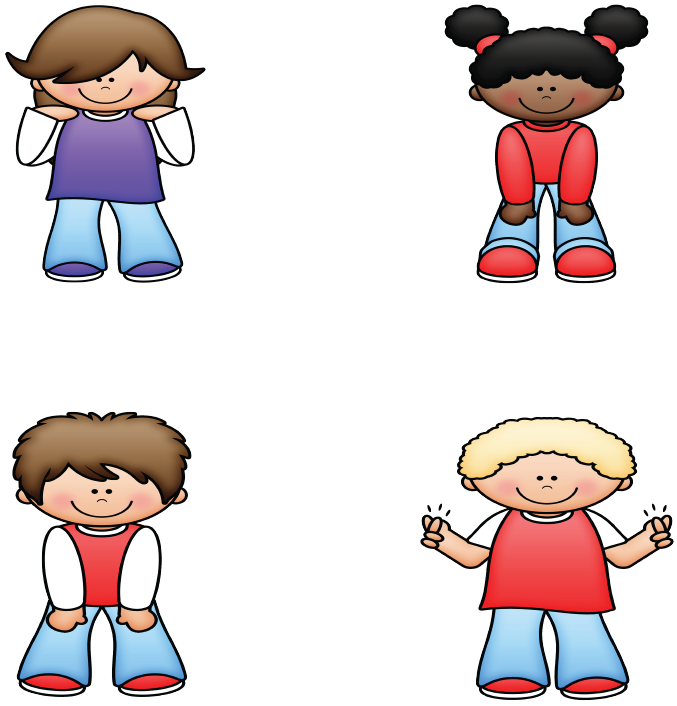
- Begin by reminding students of the concept of body percussion. Explain that it involves creating music using the body by clapping, tapping, stamping, or clicking various parts like the knees, thighs, chest, mouth, or feet.
- Demonstrate a simple rhythm for the students to mimic, such as "ta, ta, ti-ti, ta, ta, ta, rest."
- Perform the same rhythm on a different body part and ask the students to follow you. Repeat this with various body parts to explore how the sounds change.
- After experimenting with different locations, engage the students in discussing the sounds. Ask them to describe the timbre of the rhythm when played on different body parts and to suggest adjectives or moods that match the sounds, such as sharp, deep, high, low, or soft.
- Encourage students to experiment with creating diverse sounds on their bodies to produce contrasting timbres. They should try to create sounds that might be described as crackly, squeaky, smooth, rough, happy, or crisp and draw inspiration from their peers.
- Invite volunteers to share the unique sounds they've created. Have each student demonstrate their sound, and then the rest of the class can attempt to replicate it. This could also be done by having each student share as you move around the circle.
 Creative movement
Creative movement
![]() Students discover a new movement game.
Students discover a new movement game.
- Students form groups of four and then arrange each group in a circle.
- Instruct the students to walk clockwise around the circle.
- Then, change direction and have them walk counterclockwise.
- Have one pair within each group raise their hands to create a "mountain peak" while the opposite pair ducks and walks under these raised hands to switch places.
- The pair that just moved under the "mountain peak" should then raise their hands to form a new peak, allowing the original peak-forming pair to duck and switch places under the new mountain.
 Listening
Listening
![]() Students explore the timbre of untuned percussion instruments.
Students explore the timbre of untuned percussion instruments.

- Arrange a variety of tuned and untuned percussion instruments in the centre and have students form a large circle around them.
- Invite each student to select an instrument and perform a brief piece for the class.
- Pose questions to the class about each performance:
- What type of sound did it produce?
- How would you describe the sound? - Together, generate a list of descriptive words and record them on the board.
- Continue this process until every instrument has been featured. Depending on your collection, this might include a few or many instruments.
- Next, engage the class in a group activity to categorise the instruments. Encourage them to find commonalities, such as the materials they are made from (wood or metal), the pitch range they cover (low to high), or the method of playing them (struck, scraped, or shaken).
- For an alternative exercise, distribute chopsticks or pencils to each student. Have them explore the acoustic qualities of the classroom by tapping gently on various surfaces like furniture or walls. This activity helps them understand the timbre of different materials in their immediate environment.
 Visual learning
Visual learning
![]() Students imagine and say the timbre of the instrument described.
Students imagine and say the timbre of the instrument described.
- Project the images below.
- Ask students what is shown in each image.
- Ask what the timbre might be if the instrument was struck.
- Ask if the instrument might have other timbres, if it was struck differently.
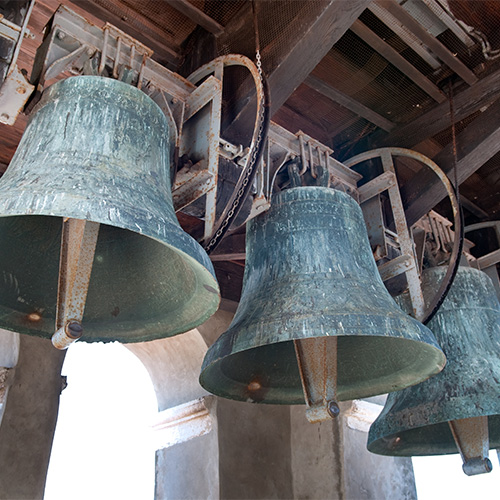
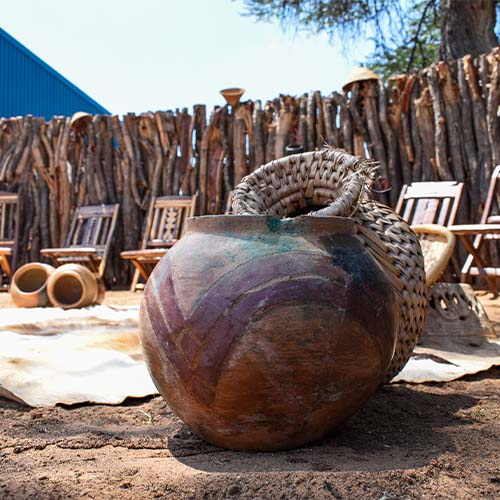
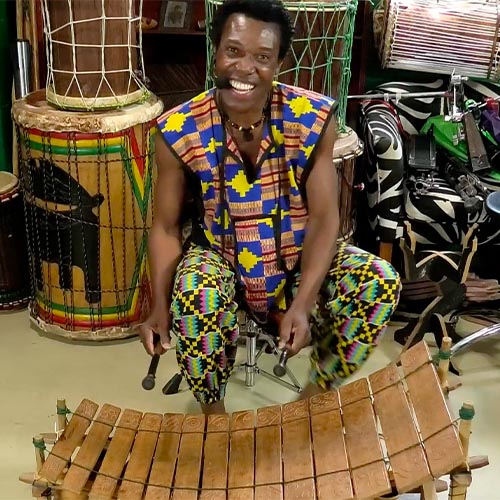
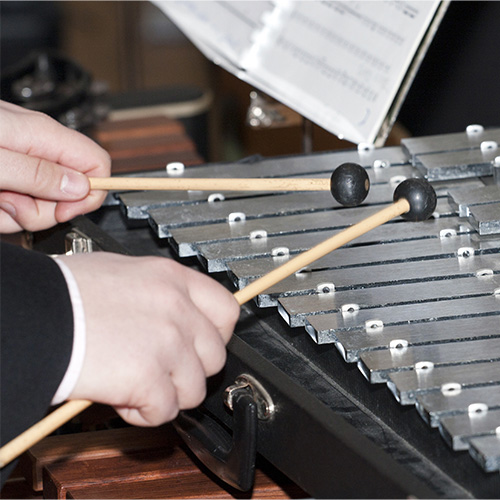

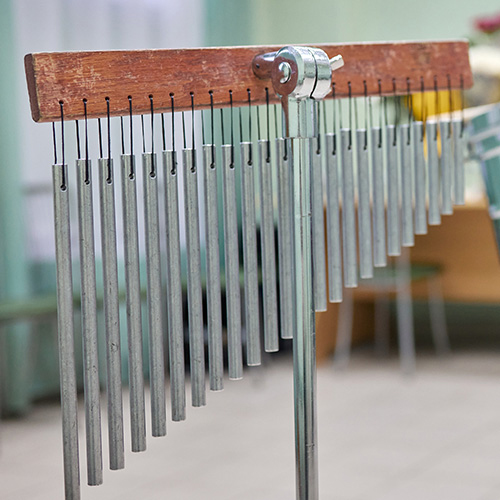
 Instruments
Instruments
![]() Students continue their journey with the recorder.
Students continue their journey with the recorder.
- This may well be a well-known classroom song for students.
- Play the song to the class in a measured fashion.
- Tell students that the song is in four-metre or quadruple time.
- Remind students that a minim has a count of two beats, and a semibreve has a count of four.

 Part work
Part work
![]() Students sing and use body percussion as an ostinato.
Students sing and use body percussion as an ostinato.
- Lead the class in singing the song.
- When secure, teach a simple ostinato pattern that may be clapped or used with body percussion.
- Suitable patterns may include ta, ta, ta, za or ti-ti, ta, ta, za.
- Students will sing the song and, at your discretion, clap or use body percussion to maintain an ostinato pattern.
 Assess
Assess
 Interactive
Interactive
Suggested lessons
Y1. Beat II

Y1. Beat III

Y1. Beat IV

